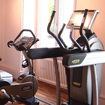Eating Healthy
Lower Secondary, A2-B1 level
Materials
Main Aims
-
By the end of the lesson, students will be able to consolidate what they have learned about the Amazing World of Food by writing about fruit and vegetables and creating a 'healthy eating' leaflet.
Subsidiary Aims
-
To provide review of food lexis in the context of fruit and vegetables
-
To provide speaking practice by reporting back to the class the benefits of fruit and vegetables
Procedure (46-52 minutes)
T plays an alphabet game with the whole class to elicit the names of fruit and vegetables. T says the letters in turn and the students name fruit or vegetables they know or have learnt during the lesson that start with the same letter, e.g. A - Apples, B - Banana, C - Carrots, D - Durian, etc. If the students can't name any, they say PASS! T asks one of the students to keep a record of the score. The students win the game if they can name at least one fruit or vegetable beginning with each letter more than they say PASS.
T asks students "Are fruit good for you? Are vegetables good for you?". Elicit one example of why fruit and vegetables are good for our health. T hands out A3 paper and asks students to work in pairs and write down six reasons why fruit and vegetables are good. When students are done, the whole class goes around the room to hear out the reasons each group had. When each group is done sharing, each student is given a blank paper where he has to write down his top six favorite reasons from all three groups.
Students use the same A4 paper from the previous stage. Students also use worksheet 1 and worksheet 2 from the previous lesson slots. Each student selects three fruit and three vegetables to write sentences about. Students get examples of sentences before they start writing.
T divides class into three groups of twos, and gives each group a leaflet to check out and see what information it has. Each group reports back to the whole class. T elicits or introduces the word "leaflet".
T explains what information needs to be included in the leaflet using an example. T gives the students the materials to start creating their own leaflets. Students write down the reasons people eat vegetables and fruit and short descriptions of each. Students can also decorate their leaflet using pictures and coloring pencils. When the students are done,they can post their leaflets on the bulletin boards for the whole class to display.
If time allows, the whole class can do a gallery walk where each student talks about his leaflet. The student can mention one out of the six reasons he wrote down and the fruit and vegetables he picked to be on his leaflet.

